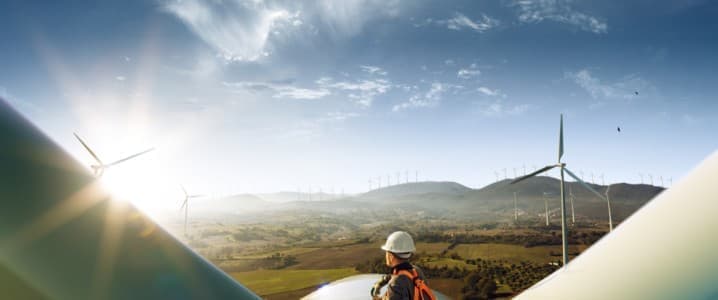
Wind energy production overtook coal and nuclear output in the U.S. in March, according to the Energy Information Administration. It was the first time that wind energy output surpassed both that of coal and nuclear power on the same day. Although natural gas continues to be the main electricity generation source.
Wind and solar power have both hit milestones globally in recent months, with the two energy sources contributing 10 percent of global electricity for the first time in 2021. This figure rises to 38 percent when taking into account all clean energy sources. The fastest-growing wind and solar energy markets are the Netherlands, Australia, and Vietnam, which have shifted a tenth of their electricity demand to renewable sources from fossil fuels over the last two years.
Hannah Broadbent from Ember explains the potential that renewable energy sources have, even in unexpected locations, “the Netherlands is a great example of a more northern latitude country proving that it's not just where the sun shines, it's also about having the right policy environment that makes the big difference in whether solar takes off.”
Rising renewable energy production is filling the gap left behind by several governments curbing their coal, oil, and gas output. As many countries pledge to shift their electricity to carbon-free over the next decade and a half, including the U.S., U.K., Germany, and Canada, their governments are creating policies to encourage greater investment in innovative new green energy projects, from gas to geothermal conversion projects to supersized wind turbines.
And digitalization could help the wind energy sector become smarter and more efficient in the near future. Experts believe incorporating new technologies into wind farms could help how the projects are forecasted, monitored, and managed. Some of these technologies include centralized computer centers, 5G, diagnostic analytics, proactive forecasting analytics, and automation.
Incorporating new technologies into wind systems could help operators detect faults in turbines in real-time to avoid delays in repair, as well as support several other areas of their function. In addition, data-sharing between companies and across countries could help operators to develop more robust wind turbines and manage their operations more efficiently.
In addition to traditional projects, now designers are coming up with innovative wind development ideas, suggesting there may be alternatives to the classic wind turbine model. Despite having battled for years for the shift away from fossil fuels to renewable energy sources, several environmentalists critique existing wind turbines for the negative effect they have on wildlife. In the U.S. alone, approximately 1.17 million birds are killed every year by wind turbines.
But now, several energy firms in Europe and the U.S. think they may have found the solution to producing wind energy without the negative repercussions. Companies are beginning to look at kite power as an alternative. Although large-scale projects are still just visions on paper, small versions have recently become available on the market. However, energy firms will have to prove the new kite technology is safe and will not harm wildlife before we see any larger developments.
Co-CEO and chief technology officer of German firm Kitekraft, Florian Bauer, explains “It’s cheaper to manufacture, cheaper to transport, and also has higher efficiency.” In addition, they have a lower carbon footprint, so, “if you have all those advantages, why would anyone build a conventional wind turbine?” he said.
Meanwhile, in the U.K. community groups are taking energy security into their own hands with plans for a mega-turbine. Residents in a poor social housing estate in Bristol have raised $4 million for the construction of a mega wind turbine, measuring 150 meters. With a maximum capacity of 4.2MW – enough to power 3000 homes – the group hopes to sell energy to the grid, earning the group an estimated $130,000 a year.
Earnings will support community projects aimed at regenerating the area, including training people to work in the renewable energy sector and helping families experiencing fuel poverty. The project is long-awaited, as the community battled for 8 years to get government approval for the construction of the turbine. According to government research, community-owned energy provides between 12 and 13 times more social and community benefits than similar commercial developments. If successful, this project could set the example for communities across the U.K. and other countries to follow.
Several countries worldwide are speeding up investments in wind development, as one of the principal forms of renewable energy production. As a greater number of wind farms are cropping up around the globe, energy firms are searching for ways to make them more efficient and increase output through the incorporation of new digital technologies, while others look into alternative wind energy structures.